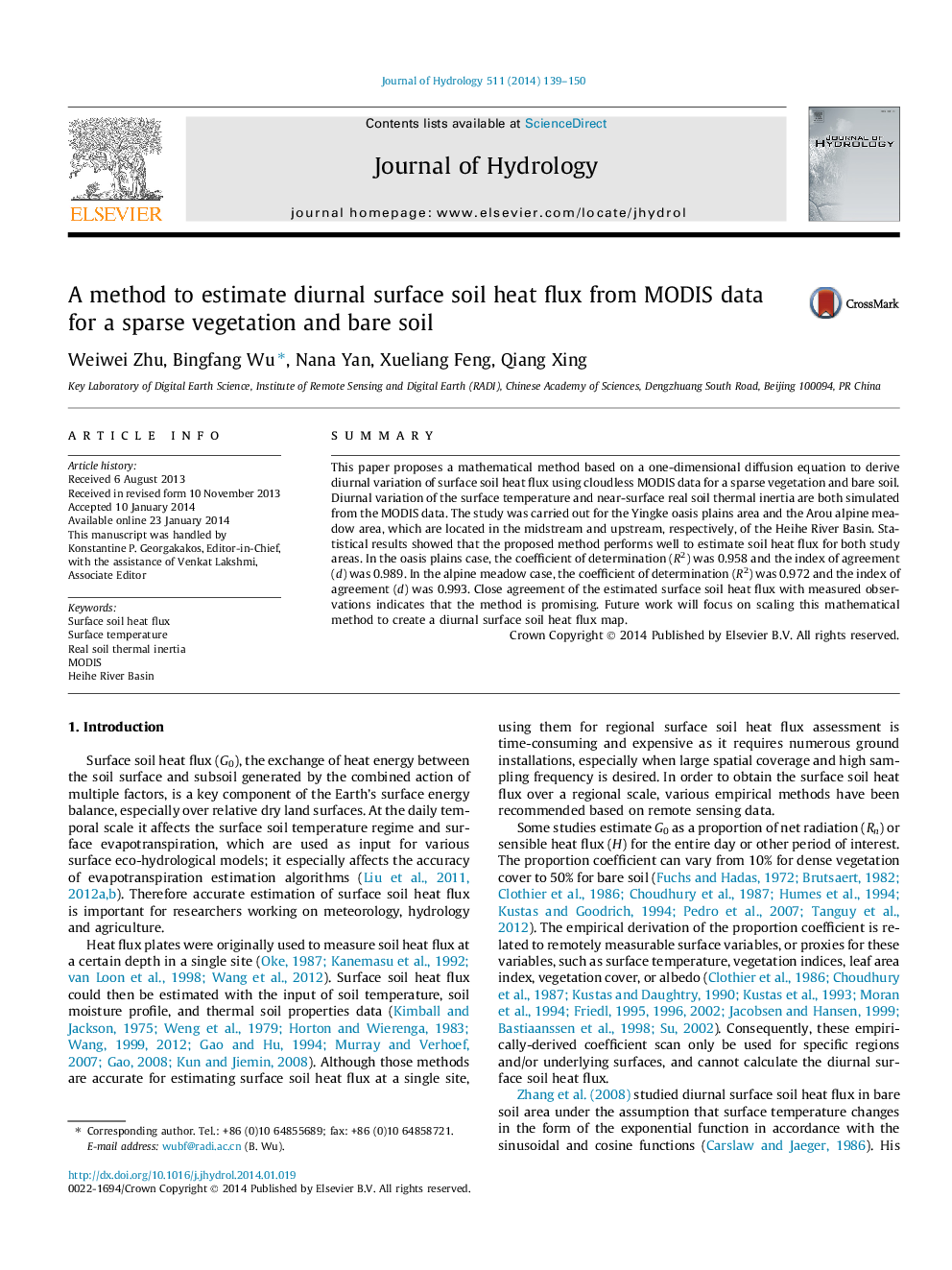| Article ID | Journal | Published Year | Pages | File Type |
|---|---|---|---|---|
| 6413278 | Journal of Hydrology | 2014 | 12 Pages |
â¢A method was developed to derive diurnal surface soil heat flux from MODIS data.â¢We propose a new algorithm to simulate variation of surface temperature.â¢We present an improved algorithm for real soil thermal inertia calculation.â¢Measured data at diverse landscapes is used for validating model performance.â¢Our model can be used to calculate surface soil heat flux over large scale.
SummaryThis paper proposes a mathematical method based on a one-dimensional diffusion equation to derive diurnal variation of surface soil heat flux using cloudless MODIS data for a sparse vegetation and bare soil. Diurnal variation of the surface temperature and near-surface real soil thermal inertia are both simulated from the MODIS data. The study was carried out for the Yingke oasis plains area and the Arou alpine meadow area, which are located in the midstream and upstream, respectively, of the Heihe River Basin. Statistical results showed that the proposed method performs well to estimate soil heat flux for both study areas. In the oasis plains case, the coefficient of determination (R2) was 0.958 and the index of agreement (d) was 0.989. In the alpine meadow case, the coefficient of determination (R2) was 0.972 and the index of agreement (d) was 0.993. Close agreement of the estimated surface soil heat flux with measured observations indicates that the method is promising. Future work will focus on scaling this mathematical method to create a diurnal surface soil heat flux map.
